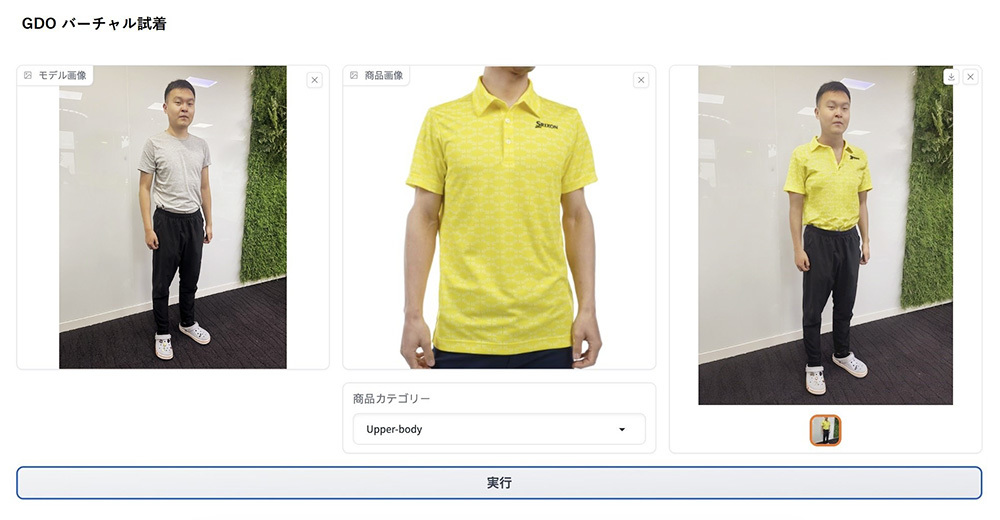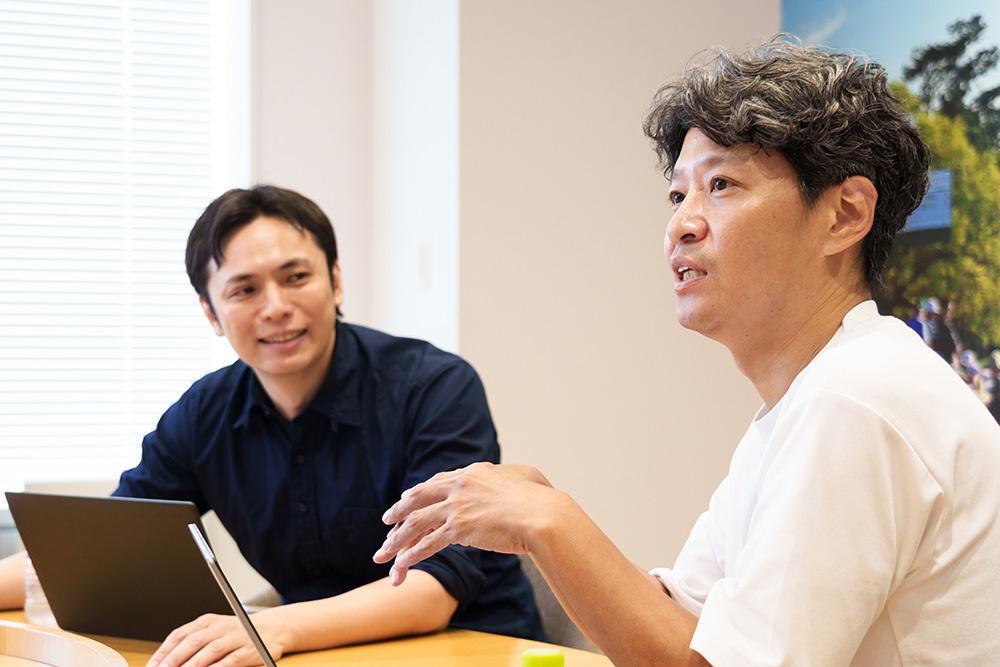As the business application of generative AI advances, a new phase has emerged in the marketing funnel: "dialogue" and "consultation" between customers and companies using generative AI. This phase promises greater reach to potential customers, improved service for existing customers, and increased repeat business.
To further explore the potential of "dialogue" and "consultation" through generative AI, Dentsu Digital Inc. established the "GDO-AI Lab," a joint research lab with Golf Digest Online (GDO). They are currently developing a demo version of the AI chatbot "GDO Staff AI," which provides personalized customer service to each user, and the virtual try-on service "GDO Virtual Try-On" for e-commerce sites.
We spoke with GDO's Hirotoshi Kato and Dentsu Digital Inc.'s Satoru Yamamoto about the objectives and initiatives of this project, as well as the potential of generative AI, which is now reaching a stage where it can be practically applied by anyone.
We see significant potential in generative AI as one means to impact customer experience
──Please tell us about the services you are currently developing: "GDO Staff AI" and "GDO Virtual Try-On".
Kato: "GDO Staff AI" is an interactive AI service placed on our golf course reservation page. When users ask questions about golf courses, the AI engages in natural conversation to understand each individual's specific requests, preferences, and latent needs, then makes personalized recommendations.
Additionally, users can engage in post-game reviews with the AI to receive item recommendations and suggestions for future courses tailored to their needs. We have accumulated a vast amount of member reviews about golf courses. By training and fine-tuning the AI with this data, we can make highly accurate recommendations based on insights not available through official course information alone.
"GDO Virtual Try-On" is a service where users upload their own images on the e-commerce site to virtually try on apparel like tops and bottoms. AI, trained on product data, generates images showing the user wearing the items in a natural way. This provides a concrete image of coordinating outfits that suit the user, solving common frustrations like "The item I bought online arrived looking different than expected" or "Trying on multiple items in-store is a hassle." It creates a more enjoyable shopping experience when selecting items.
──Both services represent cutting-edge initiatives unprecedented in the golf industry. Could you share how this project began?
Kato: Our company has long been proactive in leveraging data and technology. When I joined mid-career in 2017, I was genuinely surprised to find that data was already well-organized and effectively utilized across various operations.
Even so, in recent years, as technology rapidly evolved and the marketing environment became increasingly sophisticated and complex, we faced challenges. There was frustration at having so much to do but not being able to accomplish everything, and a tendency for marketing initiatives to become commoditized as we overly prioritized efficiency. While exploring how we could undertake a new challenge that would significantly transform the customer experience, we were introduced to Mr. Yamamoto by a representative from Dentsu Digital Inc., who we had previously worked with as a partner for performance advertising.
Yamamoto: That's right. While having a meal together and freely exchanging ideas, the concept of "AI Shop Assistants" emerged. At that point, many aspects of what could be achieved were still unclear, but I distinctly remember sensing tremendous potential.
──What specifically made you feel it had such potential?
Yamamoto: First, GDO's management team was very proactive about leveraging technology and had a strong, company-wide commitment to taking on challenges. Also, since GDO covers such a broad spectrum of golf-related areas, there was potential to create an AI that could connect all aspects of the golf experience. It was right at a time when technologies like generative AI were rapidly evolving, so I was excited about the chance to take on this challenge using cutting-edge technology.
──This time, you launched the project as a joint lab. What was the intention or goal behind that?
Kato: While the keyword "AI Shop Assistant" was prominent, we started by exploring what was actually possible with the data we possessed. We wanted to move beyond a simple client-vendor relationship and collaborate on research together.
Yamamoto: Especially in the generative AI field, which is still maturing, the technology we thought was best today could be replaced by something better just a week later. To flexibly adapt to such changes, a collaborative research framework centered on proof-of-concept experiments was ideal. On top of that, it was reassuring to have a clear division of labor: we handled the generative AI technology verification and logic development, while GDO took charge of service implementation and marketing utilization.
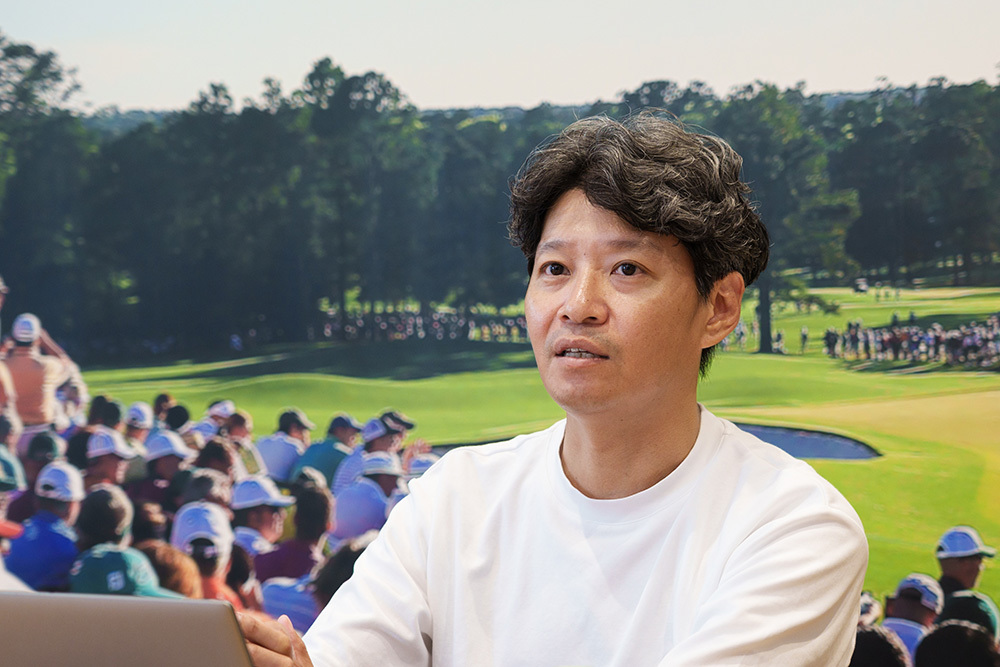
Golf Digest Online, Mr. Yutaka Kato
By dividing conversations into multiple steps and utilizing specialized LLMs for each step, we achieved approximately a threefold improvement in accuracy!
──How did you proceed with verification and development at "GDO-AI Lab"?
Yamamoto: As Mr. Kato mentioned earlier, even we—who handle data from various companies—were astonished by the highly organized big data provided. Moreover, it contained not just general golf course data, but also a massive accumulation of raw user feedback centered around reviews.
For example, information like "This golf course has strong shower pressure" or "The caddies were very helpful" isn't found on official websites. By training the AI to learn these deep insights, we built a "Golf Course DNA" that aggregates information relevant to user interests.
Kato: The Golf Course DNA contained insights that even we, with years in the golf business, found highly convincing. Every point was something you'd nod at and think, "Yeah, that makes sense," but it hadn't been properly categorized and visualized before. That really drove home the strength of what AI can do.
Yamamoto: In addition to this Golf Course DNA, we've introduced our proprietary "Multi-Step Scenario Control" technology this time. This technology utilizes multiple specialized LLM (Large Language Models) tailored to each step of the conversation.
For example, wouldn't it feel unnatural if an AI chatbot suddenly said, "Hello. Here's the golf course we recommend for you"? To avoid that, we start with icebreaker questions like "Is this your first time playing golf? How much experience do you have?" as general conversation. Once that step is complete, we move to the next stage where we gather essential details like location, number of players, and desired booking date to narrow down the golf courses. Once we've narrowed down the candidates sufficiently, we finally proceed to the step where we propose recommended golf courses to the user.
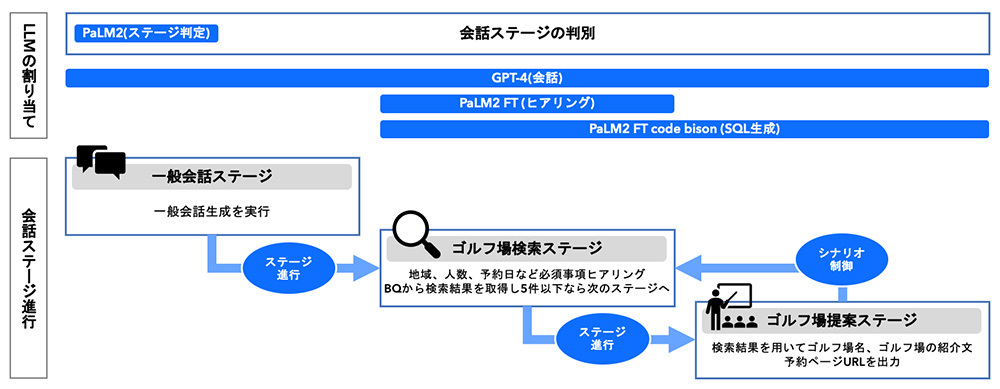
Concept diagram of multi-step scenario control. Dividing conversations into multiple steps and utilizing specialized LLMs for each step significantly improved task accuracy.
Yamamoto: From the user's perspective, it feels like conversing with a single AI. Behind the scenes, however, specialized LLMs for the "General Conversation Stage," "Golf Course Search Stage," and "Golf Course Recommendation Stage" are each operating. They constantly identify the current conversation stage and collaborate to provide a seamless experience. This approach achieves approximately three times the accuracy compared to implementing everything with a single LLM.
Kato: The AI also handles determining "Which stage is the current conversation in?" I was surprised at how naturally the conversation flows—far more than I imagined.
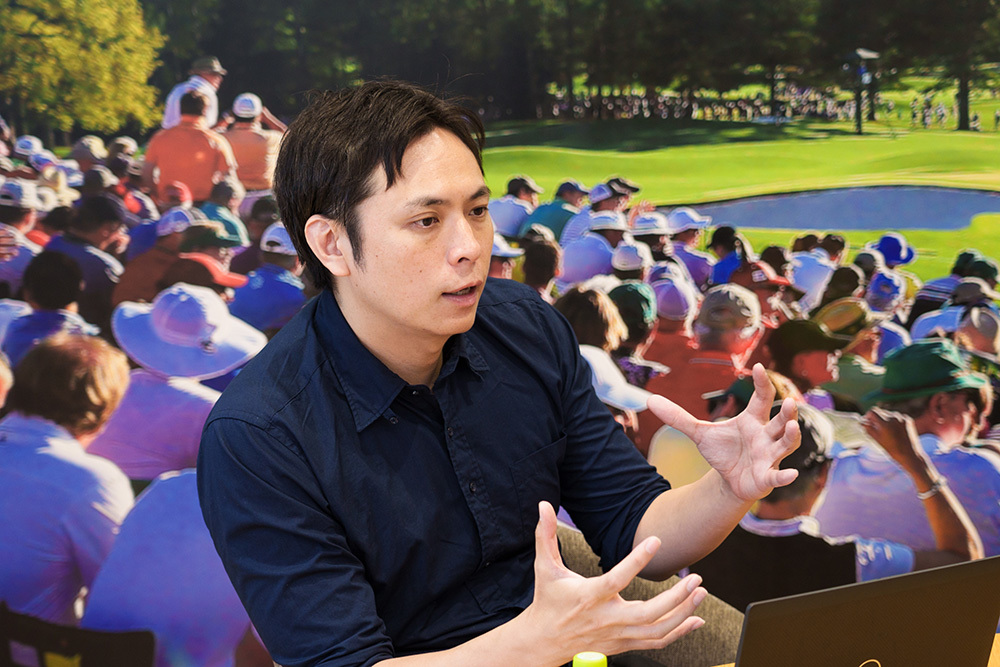
Satoru Yamamoto, Dentsu Digital Inc.
Average session duration: 3 minutes. Average number of replies: 5. Conversations between users and AI flow smoothly, extracting further insights.
──Please share the results of the proof-of-concept experiment.
Yamamoto: Before release, we implemented the GDO Staff AI on select landing pages as a proof-of-concept and had actual users experience it. As a result, we extracted insights from 70% of users who initiated conversations, and 80% of those progressed to the proposal stage. The session duration was also long, with conversations averaging about 3 minutes.
I was genuinely surprised myself—who knew humans and AI could converse so naturally? (laughs) Users can also chat with the AI after their round, averaging about 5 replies. This confirmed GDO's hypothesis: "Golfers want to talk extensively about their game after playing."
Kato: Yes, the conversation topics also matched our hypothesis. Users reflected on their game, discussing what went well and attributing failures to club selection or playing conditions. While we had some anxiety about having users test it during the trial phase, proving the hypothesis correct felt like a major step forward for the project.
──How was the response from inside and outside the company?
Kato: When we reported the proof-of-concept results in our company-wide chat, the response was tremendous. Many members volunteered to participate next time, and I feel this sparked conversations about AI adoption across the company. It seems to have been a great catalyst.
Yamamoto: We presented this case study at "Direct Agenda 2024," a conference gathering marketers globally. It won the Agenda Award based on votes from top marketers at about 300 business companies. Seeing people from diverse industries and business models recognize the potential in this initiative gave us real confidence.
Furthermore, while we had been offering generative AI solutions for operational efficiency to various clients, this project demonstrated how generative AI could also enhance user experience. This opened the door to receiving a significant increase in inquiries from many clients.
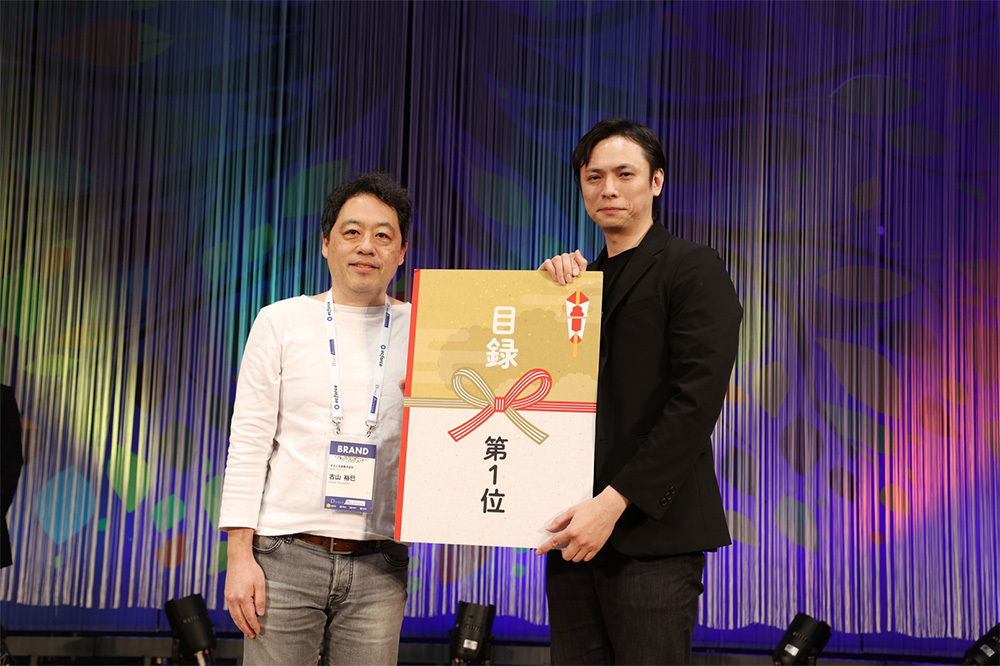
Scene from the "Direct Agenda 2024" Award Ceremony
The evolution of generative AI ushers in an era where companies can build their own unique economic ecosystems
──The service currently under development is a demo version preceding full implementation. Could you share details about the development work leading up to the official release?
Yamamoto: "GDO Virtual Try-On" generates how clothing looks when worn using images users upload of themselves. Moving forward, we plan to add features like try-ons combining items with past purchases, outfit suggestions, and recommendations for similar items.
For example, with outfit suggestions, we're training the system on data from recommended outfits curated by GDO's shop stylists. This challenges us to replicate the "stylist's sense" that's difficult to achieve with text data alone.
Kato: Just as one example, a combination like "a refreshing blue striped top" and "sporty yellow pants" might sound good based on text alone, but when you actually try it on, it might not work. By training the generative AI on the nuances of styling sense, we want to provide an experience on the e-commerce site similar to trying things on while consulting with a store clerk.
──What are your future goals for the "GDO-AI Lab"?
Kato: Beyond just "GDO Staff AI" and "GDO Virtual Try-On," we believe that collecting and analyzing reactions and feedback from all user touchpoints, then training generative AI with this data, can contribute not only to improving the user experience but also to supporting the work of our in-house marketers.
If a marketer's job spans from 1 to 10, we envision a future where we progressively delegate tasks between 1 and 10 to generative AI. This allows marketers to focus their creativity on the 0→1 stage—generating ideas—and the 10 stage—final polishing.
Yamamoto: By combining GDO's extensive user and content data with AI, we aim to develop the "GDO Economic Zone"—a space where customer experiences are richly transformed across all service domains. Traditionally, establishing such an economic zone required massive amounts of data, creating a bottleneck: individual companies either lacked sufficient data or couldn't effectively handle vast datasets.
However, by incorporating "dialogue" and "consultation" into user touchpoints, as we are doing now, we can quickly gather a large volume of deep user insights. Moreover, generative AI rapidly organizes and visualizes this vast data, enabling individual business companies to build large-scale economic ecosystems.
Kato: While developing this economic ecosystem, we aim to maximize the value of services only GDO can provide, delivering enjoyable golf experiences to more people. As a golf business company, our mission is to create experiences that delight golfers, bring them joy, and offer convenience. To achieve this, we want to leverage technology, including generative AI. With support from professionals like Mr. Yamamoto, we're eager to continuously challenge ourselves with cutting-edge initiatives.






